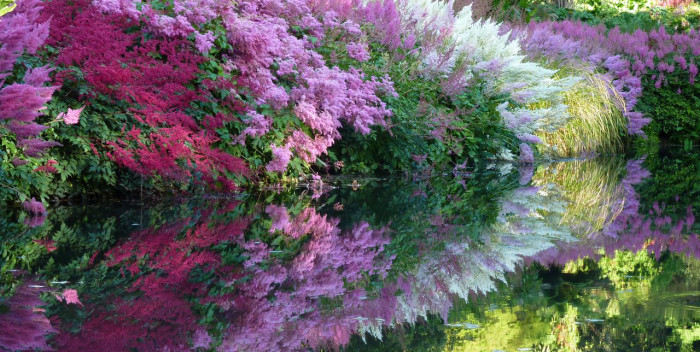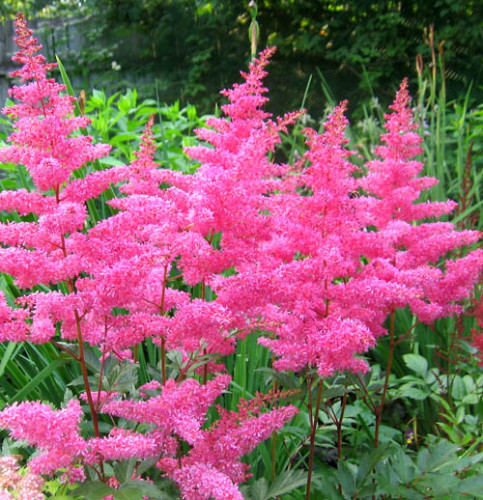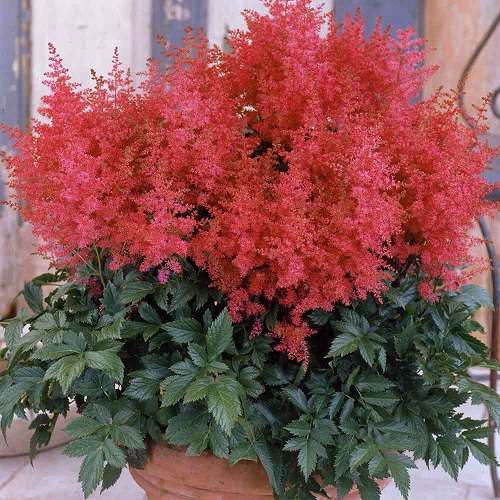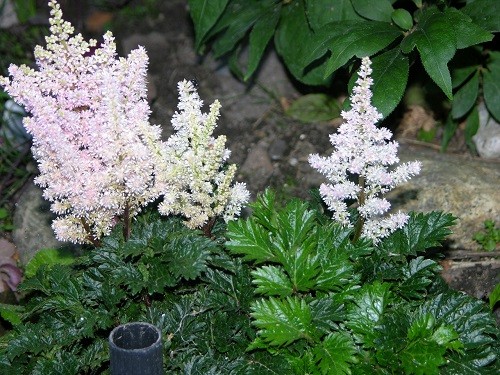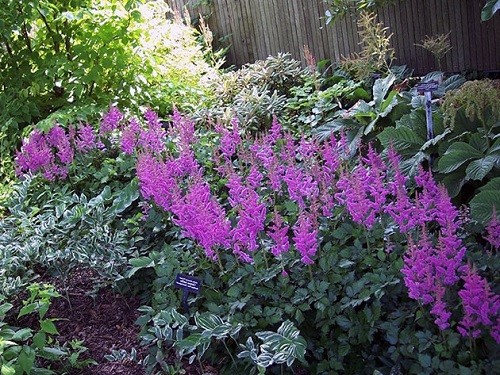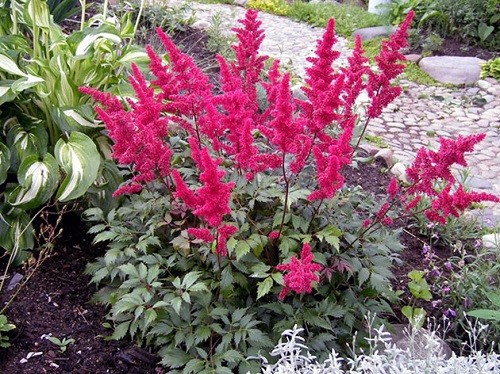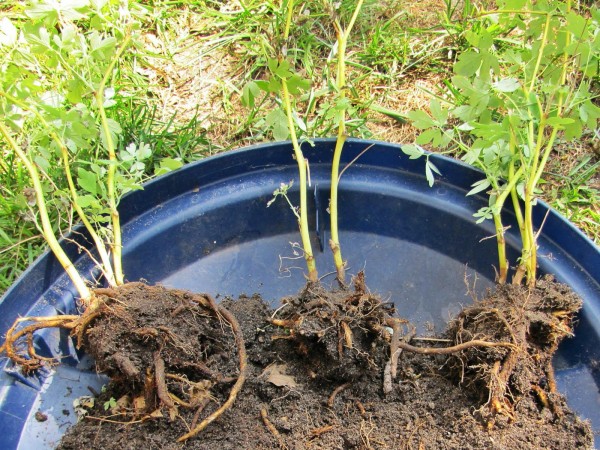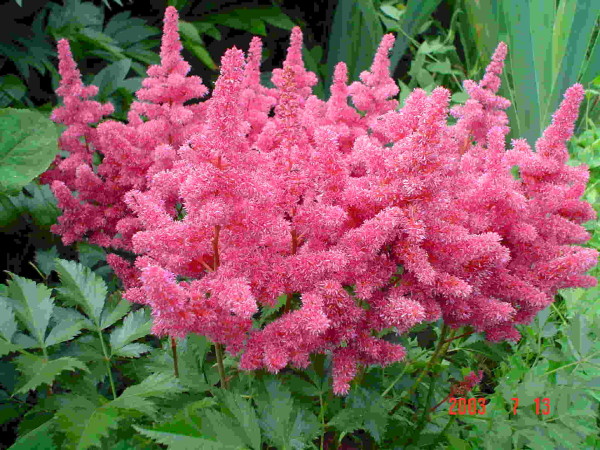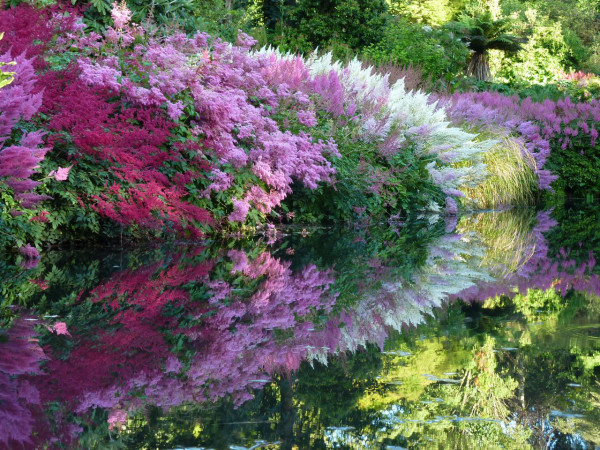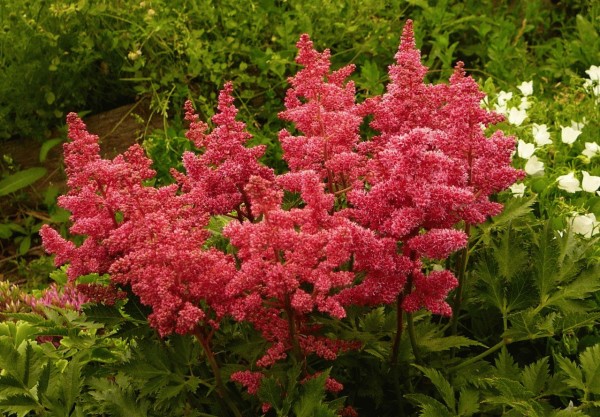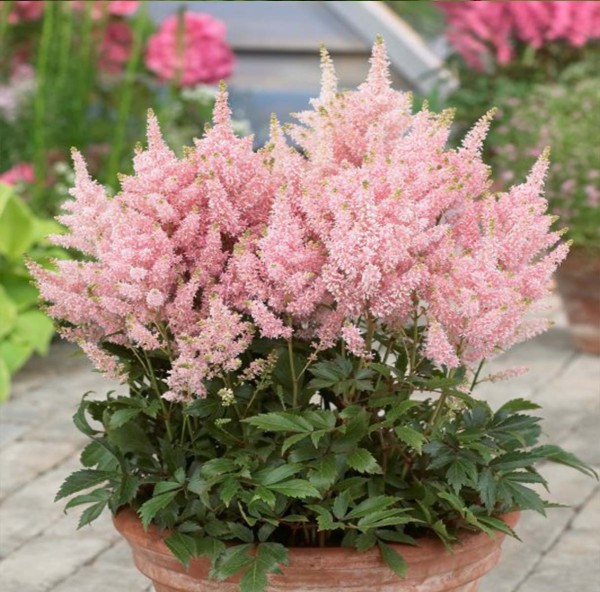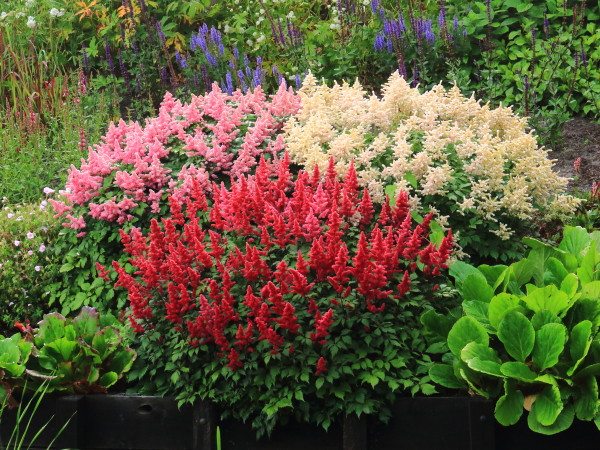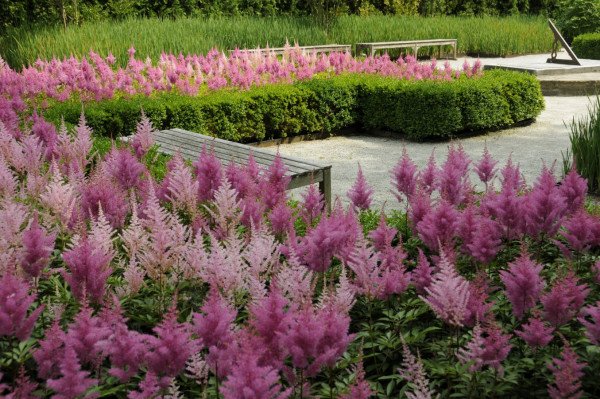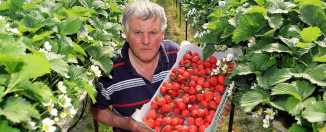Astilba: planting and care
Gardeners love Astilba for its unusual appearance and long flowering period. This sprawling bush is used as a decorative element to decorate the shaded corners of the garden. This plant is interesting not only during the flowering period, but also throughout the summer.
Astilba varieties
This plant is diverse. varieties, but most often only a few of them are found in gardens:
- Astilba Ardens is a whole family of varieties derived from David's Astilba. Plants of these varieties grow up to one and a half meters in height and can be in the form of a ball or a cone. The inflorescences have a variety of colors, ranging from white to bright purple hues.
- Astilba Boogie Woogie belongs to the hybrid varieties, the height of its bushes is about 70 cm.This astilba begins to bloom in July. The inflorescences of a rich pink color have a diamond-shaped structure.
- Astilba, called Jump and Jive, is short, up to half a meter. It begins to bloom in the last days of June with dark pink inflorescences, creating a bright contrast to the green foliage.
- Astilba Lilliput fully lives up to its name. In height, the bushes of this variety reach only 25 cm. Salmon-colored inflorescences bloom in mid-July. This variety is often used to decorate small flower beds.
- Astilba Chinese can grow up to 110 cm up. The size of its leaves decreases as you move from the root to the top. The inflorescences of this variety are dense purple in color.
- Astilba Japanese has dense small leaves with bright ornaments. Her inflorescences are painted white or pink. Their distinctive feature is the preservation of their shape even after drying.
Landing astilba
The preferred way to grow Astilba is from seed. Although you can use vegetative options. But it is by the seed method that new varieties of this plant can be obtained.
The seeds should be sown in March. To do this, a mixture of equal parts of sand and peat must be placed in a box 15 cm high. Snow is laid on top with a layer of 1 cm. Seeds are scattered on top of the snow layer and wait for the snow to melt. The box is then wrapped in a plastic bag and placed in the cold for three weeks until shoots appear. After that, the shelter is removed and the container with seedlings is moved to a warm place. Watering the seedlings should be very careful, trying not to get water on the plants. It is best to inject moisture directly into the soil from a syringe.
After the seedlings have 3 leaves, they need to be dived into small containers for planting in open ground. This should be done in the last days of May, choosing a place sheltered from the sun's rays on the north side of buildings or in the shaded corners of the garden. It is good if in this place there is a loamy soil of high moisture.
Before landing the area for astilba must be dug up and weeds and other debris must be removed. Then you need to feed the soil with organic fertilizers. For planting, a hole about 30 cm in size is dug under each astilbe bush. The same distance is observed between the holes. Astilba seedlings are placed in a prepared hole and covered with soil, compacted and mulched with peat or humus.
Astilba care
Astilbe bushes are not too demanding to care for. Its main feature is that the rhizome grows upward and eventually comes to the surface. In this regard, every year it is required to add a new layer of soil. As a result, after a few years, an ugly mound forms.
Astilba does not like drought and overheating of the roots. Therefore, it is best to mulch the soil around the bush. This is also useful for wintering astilba - mulch will prevent the roots from freezing.
The stems, on which the inflorescences have already faded, must be cut off in order to preserve the attractive appearance of the bush. In the fall, all stems are cut off completely. You can also leave the aboveground part of the astilba for the winter, but then pruning must be done in the spring after the snow melts.
With the beginning of the growing season, the plant must be fertilized with nitrogen-containing fertilizers. During the budding period, make top dressing fertilizers with potassium and phosphorus. After feeding the astilbe, it is imperative to loosen the soil around the bushes and mulch.
Astilba does not tolerate drought, so keep an eye on constant soil moisture. In a particularly hot time water plant in the morning and evening hours. Also, increased watering is required during the formation of inflorescences.
Astilba transplant
The plant feels good in one place for about 5 years. After that, the bush must be moved to a new location. Astilba perfectly tolerates this procedure throughout the summer, regardless of whether it blooms at this moment or not. When transplanting, try to grab the largest clod of earth. And after moving the plant to a new place, water it abundantly. In the process of transplanting, you can divide the bush so that at least 3 buds remain on each part.
Then the cuts are sprinkled with crushed coal and parts of the bush are placed in the holes prepared in advance. You can additionally treat the rhizomes with a special stimulant to accelerate root formation and growth.
